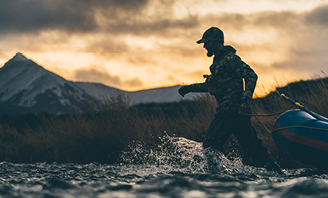While on location during a Texas predator hunt, Leupold Brand Creative Manager Lucas Burt chatted with Jeff Thomason, host of Predator Pursuit, and Tim Lesser, VP of Product at Leupold.
Jeff, who has an extensive background in coyote hunting, shared how his show, Predator Pursuit, got its start. Since the idea of simply sitting in a stand never really appealed to Jeff, he decided to make his hunting experience revolve around calling in animals – predators and big game alike. While Jeff enjoyed hunting every species, he found his niche helping control predator populations in Texas.
Predators have posed a serious challenge to farmers and guides across the state, preying relentlessly on livestock and wild game. This opened the doors for predator hunting opportunities with numerous farmers and ranchers who gladly let Jeff hunt foxes, coyotes, and bobcats on their land.
While many hunters are used to chasing game during the day, a lot of predator hunting happens at night, which can pose certain challenges. Tim Lesser compared these challenges to his experiences hunting predators as a Wyoming guide and an avid Oregon hunter. Whether it be what color light to use or how to keep the coyotes from catching your scent, there were several tips Tim picked up from this experience that differed from what he was used to.
One thing that remained constant, however, is the importance of good gear. Tim brought a low-weight, high-impact .223 bolt-action rifle for this type of hunting, while Jeff used a heaver-barreled bolt-action rifle. Tim also used a Leupold VX-Freedom 2-7x33mm rifle scope on low power to allow for a wider field-of-view, providing more visibility for the coyotes being called in during the day. Jeff opted for a higher power VX-R rifle scope, so he’d be able to better determine which type of predator he had in his sights at night.
Jeff talked about one common mistake predator hunters often make during a night hunt, which is turning your lights on and off. By leaving the lights on, you’re actually able to camouflage yourself from the predator and blind them a bit. Predators, especially at night, have a keen sense of sight, so by adding light, you are actually reducing their visibility. Another mistake many hunters make is putting down their rifle after they’ve killed their first coyote. There’s a temptation to want to celebrate, but there could be other coyotes nearby. Continuing to call could bring them in.
Jeff also shared some of the difficulty around producing a predator hunting show. Since the animals are so unpredictable and the conditions have to be just right in order to get good footage, identifying the right stand becomes more tedious. Regardless of the difficulties, it’s a process that pays off in the long run.



